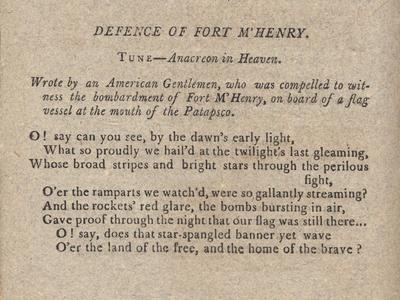

Although this arrangement is often used in nonmilitary performances, there is no single official version of the anthem designated for civilian use.

Then conquer we must, when our cause it is just,Īnd this be our motto - “In God is our trust,”Īnd the star-spangled banner in triumph shall waveDuring World War I the War department established a standard arrangement to be used by U.S. Praise the power that hath made and preserv’d us a nation!

O thus be it ever when freemen shall standīetween their lov’d home and the war’s desolation!īlest with vict’ry and peace may the heav’n rescued land O’er the land of the free and the home of the brave. No refuge could save the hireling and slaveįrom the terror of flight or the gloom of the grave,Īnd the star-spangled banner in triumph doth wave Their blood has wash’d out their foul footstep’s pollution. That the havoc of war and the battle’s confusionĪ home and a Country should leave us no more?

O’er the land of the free and the home of the brave!Īnd where is that band who so vauntingly swore, ’Tis the star-spangled banner - O long may it wave In full glory reflected now shines in the stream, Now it catches the gleam of the morning’s first beam, What is that which the breeze, o’er the towering steep,Īs it fitfully blows, half conceals, half discloses? Where the foe’s haughty host in dread silence reposes, On the shore dimly seen through the mists of the deep O’er the land of the free and the home of the brave? O say does that star-spangled banner yet wave Gave proof through the night that our flag was still there, O’er the ramparts we watch’d were so gallantly streaming?Īnd the rocket’s red glare, the bombs bursting in air, Whose broad stripes and bright stars through the perilous fight What so proudly we hail’d at the twilight’s last gleaming, O say can you see, by the dawn’s early light, Friederich, the music is played as it would have been heard in 1854. This 19th century version (MP3) of the Star-Spangled Banner was performed on original instruments from the National Museum of American History's collection. Shortly afterward, two Baltimore newspapers published it, and by mid-October it had appeared in at least seventeen other papers in cities up and down the East Coast. A local printer issued the new song as a broadside. Back in Baltimore, he completed the four verses (PDF) and copied them onto a sheet of paper, probably making more than one copy. Inspired by the sight of the American flag flying over Fort McHenry the morning after the bombardment, he scribbled the initial verse of his song on the back of a letter. Francis Scott Key was a gifted amateur poet.


 0 kommentar(er)
0 kommentar(er)
